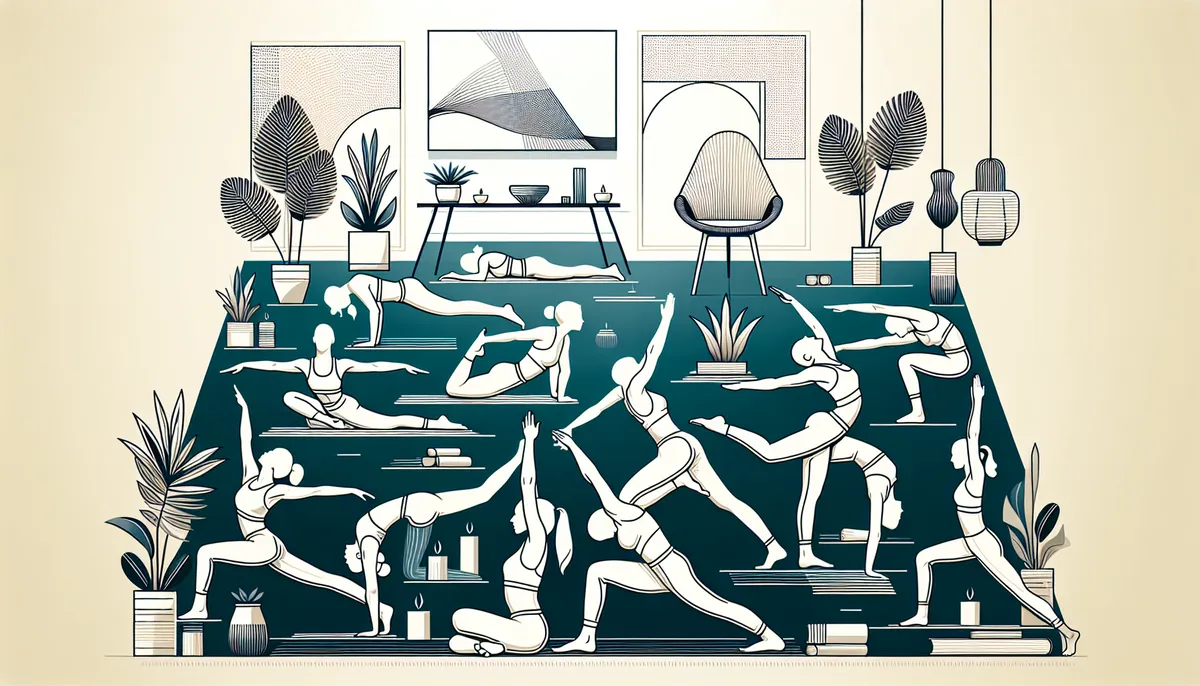The Ashtanga Primary Series, known as Yoga Chikitsa or yoga therapy, offers a structured path to building strength, flexibility, and mental focus. For beginners, this traditional sequence can seem daunting, but with proper guidance and understanding, it becomes an accessible and transformative practice.
In this comprehensive guide, we'll break down the Primary Series into manageable sections, helping you build a strong foundation for your Ashtanga journey. Whether you're completely new to yoga or transitioning from other styles, you'll find practical steps to begin this powerful practice safely and effectively.
Understanding the Foundation
Before diving into the sequence, it's essential to understand the core elements that make Ashtanga unique. As explored in our article on Ashtanga Vinyasa Yoga, this practice combines breath, movement, and specific gazing points (drishti) to create a moving meditation.
Key Components of the Practice:
- Ujjayi Breath: The cornerstone of Ashtanga practice
- Vinyasa: The synchronized breath-movement system
- Bandhas: Internal energy locks
- Drishti: Specific gazing points
Starting Your Practice
Opening Sequence (Surya Namaskar)
The Primary Series begins with Sun Salutations, which warm up the body and establish rhythm in your practice. There are two types:
Surya Namaskar A (5 rounds)
- Standing at attention (Samasthiti)
- Forward fold (Uttanasana)
- Half-forward fold (Ardha Uttanasana)
- Chaturanga Dandasana
- Upward-Facing Dog (Urdhva Mukha Svanasana)
- Downward-Facing Dog (Adho Mukha Svanasana)
Surya Namaskar B (5 rounds)
- Adds Chair Pose (Utkatasana)
- Warrior I (Virabhadrasana A)
Standing Sequence
After Sun Salutations, the standing sequence builds strength and establishes proper alignment:
- Padangusthasana: Big Toe Pose
- Padahastasana: Hand-to-Foot Pose
- Trikonasana: Triangle Pose
- Parivritta Trikonasana: Revolved Triangle
- Prasarita Padottanasana A-D: Wide-Legged Forward Folds
Core Work and Seated Postures
The heart of the Primary Series lies in its seated postures, which systematically work on:
- Spinal flexibility
- Hip opening
- Forward folding
- Twisting
Key Seated Poses:
Dandasana: Staff Pose
- Establishes proper seated alignment
- Activates leg muscles
- Lengthens spine
Paschimottanasana: Seated Forward Fold
- Stretches entire back body
- Calms nervous system
- Improves digestion
Purvottanasana: Upward Plank
- Counterpose to forward folds
- Strengthens arms and wrists
- Opens chest and shoulders
Modified Approaches for Beginners
Building Your Practice Gradually
Start with Half Primary
- Practice only Sun Salutations and Standing Poses initially
- Add seated poses gradually as strength builds
- Focus on breath and bandhas before advancing
Modified Versions
- Use props when needed
- Take extra breaths in challenging poses
- Work with a qualified teacher
Common Challenges and Solutions
Flexibility Limitations
- Use blocks in forward folds
- Bend knees as needed
- Focus on lengthening spine over touching toes
Strength Building
- Practice modifications of Chaturanga
- Build upper body strength gradually
- Incorporate supplementary exercises
Establishing a Home Practice
Creating a Sustainable Routine
Practice Time
- Early morning is traditional
- Consistency matters more than timing
- Start with shorter sessions (45-60 minutes)
Practice Space
- Create a dedicated area
- Ensure proper ventilation
- Minimize distractions
Moving Forward
When to Progress
Look for these signs before advancing in the sequence:
- Steady, comfortable breath throughout practice
- Familiar with pose names and sequence
- Basic poses feel manageable
- Consistent practice rhythm established
Safety and Self-Care
Important Guidelines
Listen to Your Body
- Never force poses
- Respect daily energy levels
- Take rest when needed
Maintain Regular Practice
- Aim for 6 days per week
- Take rest on moon days
- Allow for recovery time
Conclusion
The Ashtanga Primary Series offers a systematic approach to developing strength, flexibility, and mental focus. By starting slowly and building gradually, you'll create a sustainable practice that serves you for years to come. Remember that everyone's journey is different – focus on your breath, maintain dedication, and trust in the process.
As you begin this journey, consider exploring our guide on Yoga Breathing Techniques for Relaxation to deepen your understanding of the breath work essential to Ashtanga practice.
Are you ready to begin your Ashtanga journey? Start with Sun Salutations tomorrow morning, and take the first step on this transformative path. Share your experiences and questions in the comments below – we're here to support your practice.
